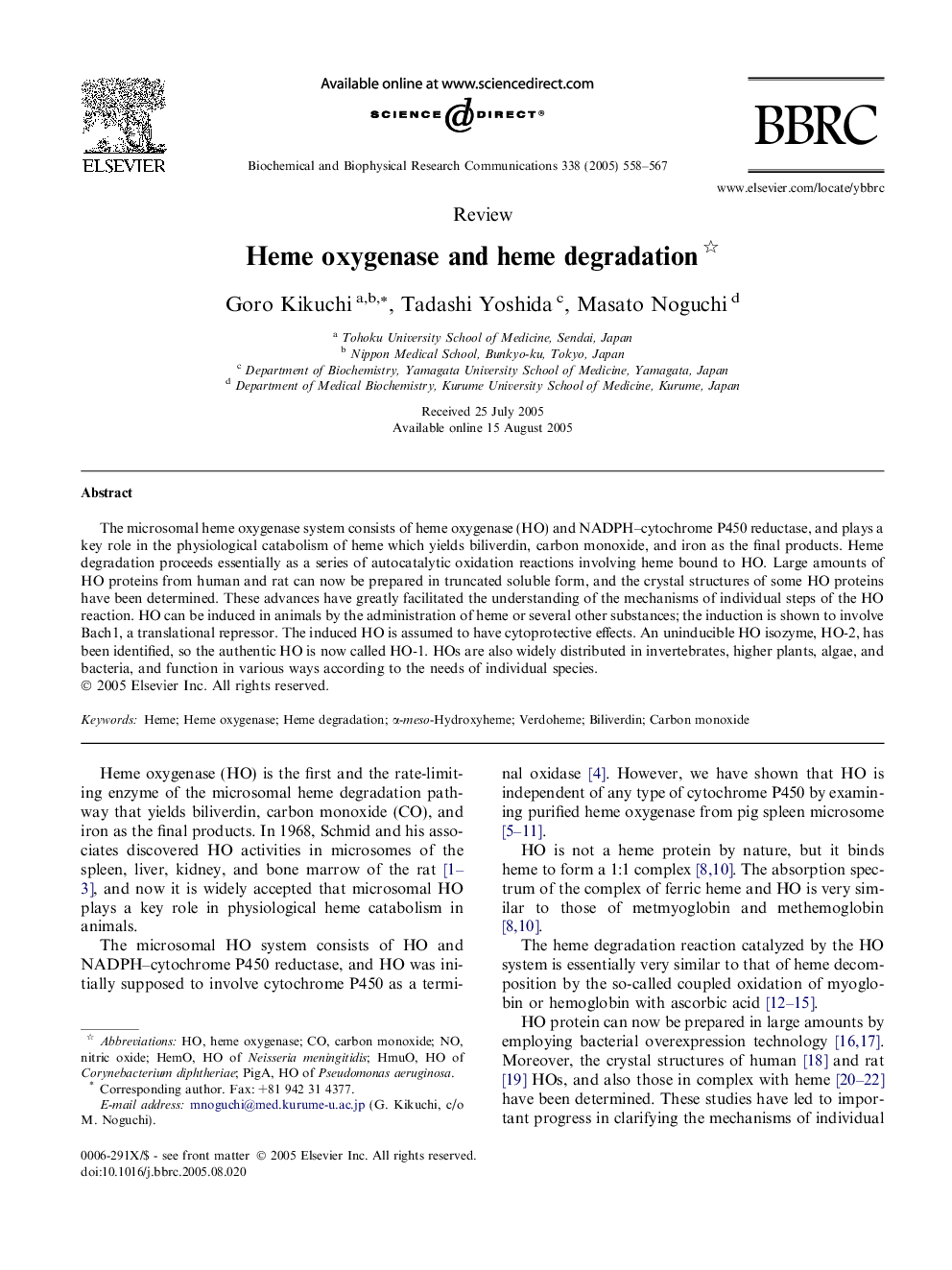| Article ID | Journal | Published Year | Pages | File Type |
|---|---|---|---|---|
| 10768215 | Biochemical and Biophysical Research Communications | 2005 | 10 Pages |
Abstract
The microsomal heme oxygenase system consists of heme oxygenase (HO) and NADPH-cytochrome P450 reductase, and plays a key role in the physiological catabolism of heme which yields biliverdin, carbon monoxide, and iron as the final products. Heme degradation proceeds essentially as a series of autocatalytic oxidation reactions involving heme bound to HO. Large amounts of HO proteins from human and rat can now be prepared in truncated soluble form, and the crystal structures of some HO proteins have been determined. These advances have greatly facilitated the understanding of the mechanisms of individual steps of the HO reaction. HO can be induced in animals by the administration of heme or several other substances; the induction is shown to involve Bach1, a translational repressor. The induced HO is assumed to have cytoprotective effects. An uninducible HO isozyme, HO-2, has been identified, so the authentic HO is now called HO-1. HOs are also widely distributed in invertebrates, higher plants, algae, and bacteria, and function in various ways according to the needs of individual species.
Related Topics
Life Sciences
Biochemistry, Genetics and Molecular Biology
Biochemistry
Authors
Goro Kikuchi, Tadashi Yoshida, Masato Noguchi,
